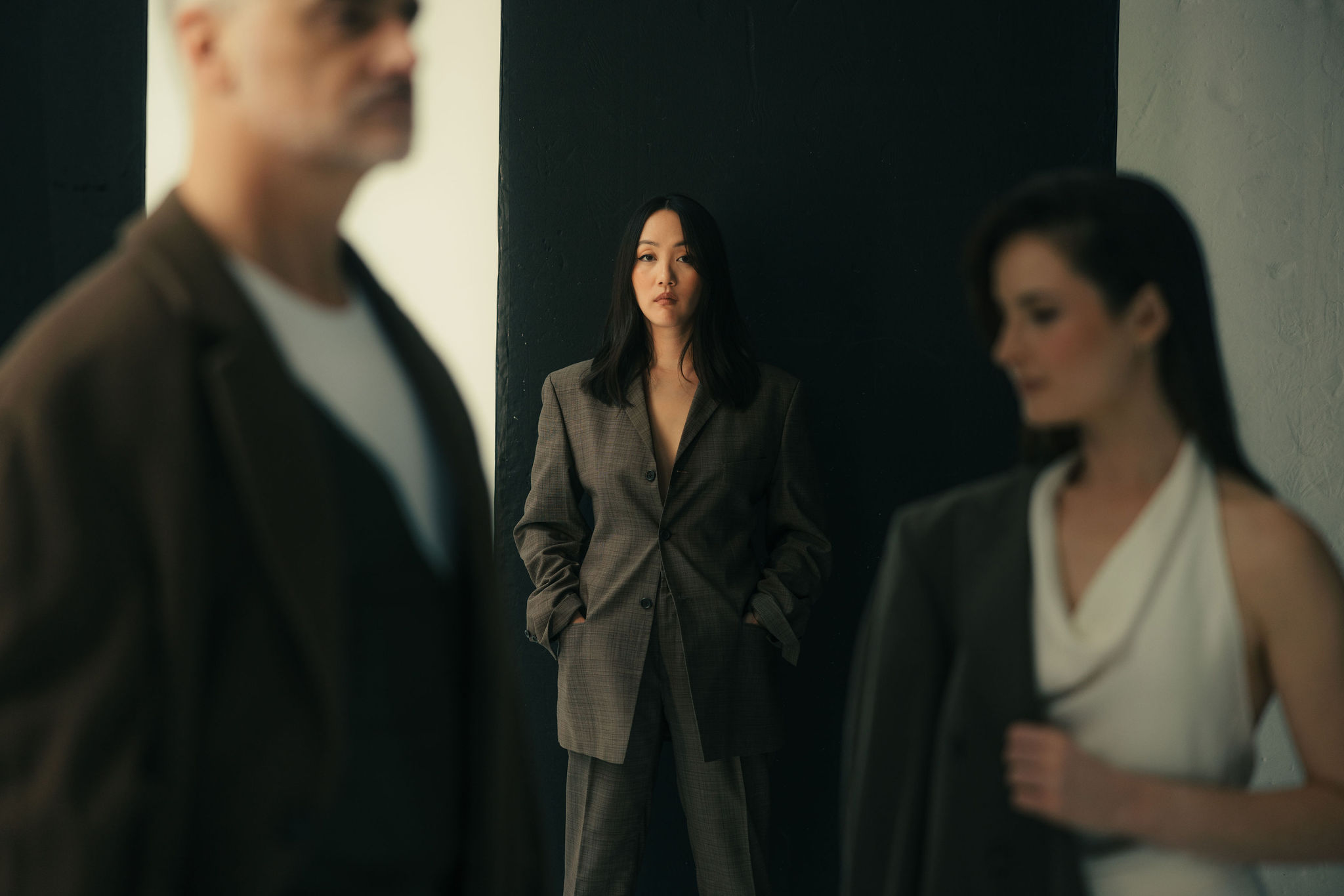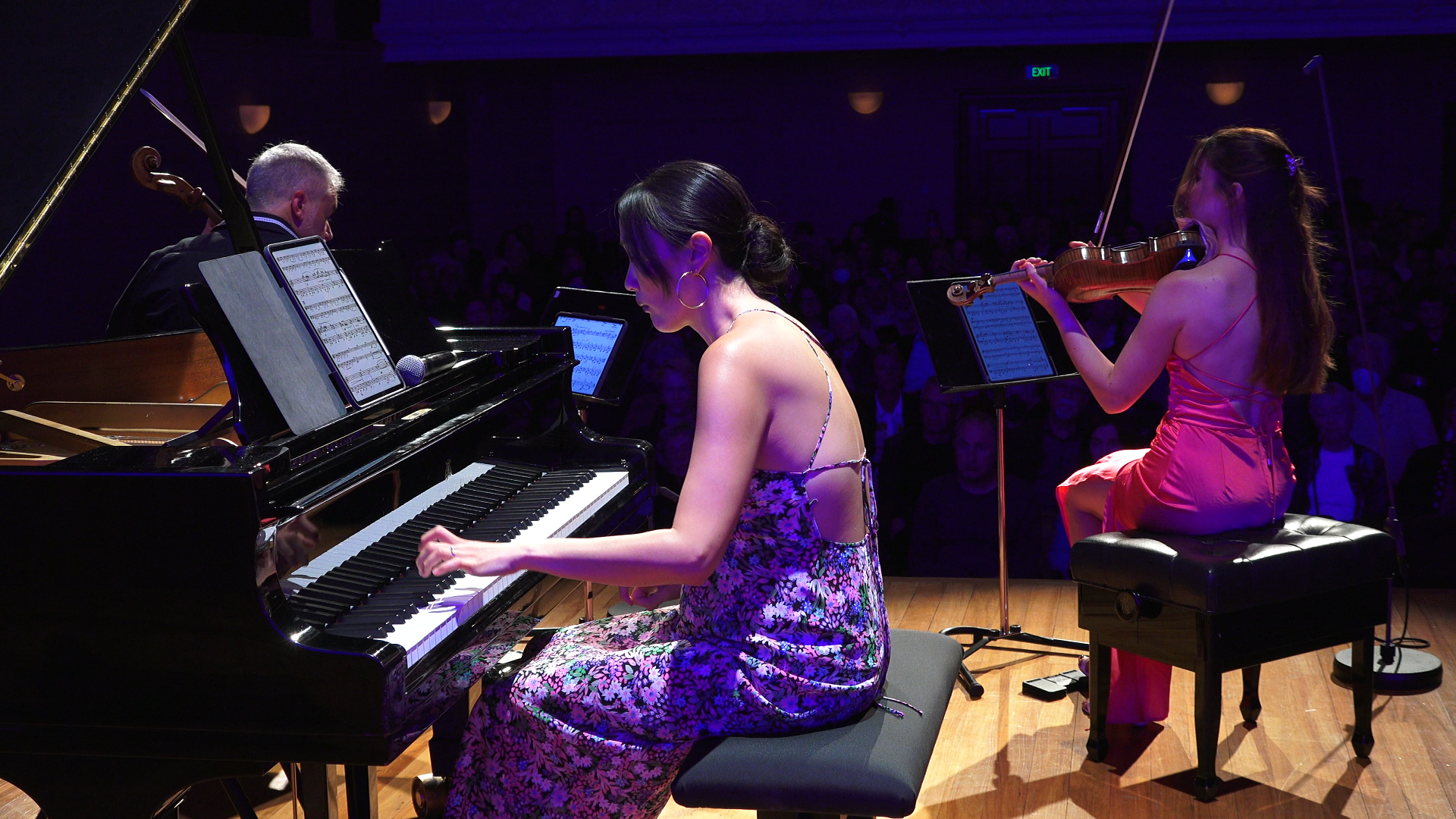Samuel Holloway’s new Corpse and Mirror continues his teasing exploration of boredom and anxiety in the concert hall. However, 18 minutes of seemingly unrelated chords, carefully toned and modulated, replaced ennui with an irresistible urge to immerse oneself in this deceptively intricate and off-beat soundworld.
William Dart – NZ Herald
NZTrio set off in the glow of a fading Celtic twilight, working valiantly to inject some semblance of stylistic unity into a 1946 piano trio by Arnold Bax.
Bax’s Adagio did showcase Ashley Brown’s uber-lyrical cello, but just how could critic Scott Goddard, 70 years ago, hail this trio as a “great little masterpiece?” Two Seascapes, arranged by Jenny McLeod from her Tone Clock Pieces, came far closer to deserving that accolade. The musicians responded imaginatively to their ingenious recasting, with veiled string sonorities in the first and frolicking dialogues in the second.
Samuel Holloway’s new Corpse and Mirror continues his teasing exploration of boredom and anxiety in the concert hall. However, 18 minutes of seemingly unrelated chords, carefully toned and modulated, replaced ennui with an irresistible urge to immerse oneself in this deceptively intricate and off-beat soundworld.
After interval, Brown introduced Beethoven’s E flat trio from Opus 70 as new to the group, warning us not to heed seeming uncertainties in its opening pages. This received the most forceful playing of the evening, with thrilling moments of tenacious thematic pursuit. Sarah Watkins’ piano was the glittering core of Beethoven’s rushing finale and, apart from some exposed solo work in that movement, Natalie Lin, the first of three violinists deputising this year for the sorely missed Justine Cormack, was at her most convincing.
William Dart – NZ Herald, August 2017

